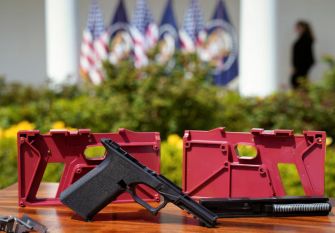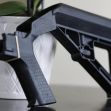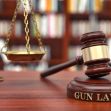In a 22-page decision marking a victory for gun safety advocates yesterday, a 7-2 majority of the U.S. Supreme Court upheld a rule regulating ghost guns and untraceable weapons without serial numbers.
The case of Bondi v VanDerStok centered around the Bureau of Alcohol Tobacco, Firearms and Explosives (ATF) 2021 Biden-era regulations that revised and updated the interpretation of the Gun Control Act of 1968's use of the terms "firearm," "firearm frame," and "receiver" to cover "ghost gun" assembly kits of weapon parts. When the Gun Control Act was first passed in 1968, ghost guns and such untraceable weapons did not exist.
Writing for the Court, Justice Neil Gorsuch explained, “Like “weapon,” the artifact nouns “frame” and “receiver” may describe not yet-complete objects. The statute uses these terms to encompass some unfinished items elsewhere, as in §923(i)’s serialization requirements for incomplete weapons, silencers, and destructive devices. ATF has for decades interpreted the statute to reach some unfinished frames and receivers, and even the plaintiffs concede they have no “quarrel” with ATF’s prior practice of regulating those products. Accordingly, the statute authorizes ATF to regulate at least some incomplete frames or receivers that take minutes of work with common tools to complete. While other products may be so far from finished that they cannot fairly be described as frames or receivers, the facial challenge fails because the statute plainly reaches some partially complete items.”
A group comprised of two individual gun owners and a gun-rights advocacy group appeared before a federal court in Fort Worth, Texas, in August 2022 to challenge the law. The judge agreed with the plaintiffs and prohibited the ATF from applying the updated rule anywhere in the United States. The case wound its way through the court system to the Supreme Court, which heard arguments last October.
At the time of the Fort Worth ruling in 2022, the Supreme Court put the district judge’s order on hold, allowing the Biden administration to enforce the rule during the appeal process.
Now, the Justices have voted 7-2 that the Gun Control Act allows the ATF to regulate some ghost guns. However, the High Court left the option open for the possibility that specific cases may not fall under the new ruling and would need to be heard in court on a case-by-case basis.
Ghost guns and other untraceable guns can be bought online, often assembled from kits in the Gun Control Act. In 2022 the ATF adopted the Ghost Gun rule and added verbiage regarding the “exponential” growth of firearms usage.
The ATF successfully argued that the 2022 rule was in line with the Gun Control Act, mainly because the “firearm” definition includes products that match the category of gun kits and other untraceable weapons. Gun kits can easily be transformed into working weapons because they have the fundamental frame of a gun and firing mechanism. In the rule, the ATF included the terms for ‘frame,’ ‘receiver,’ and the meaning of ‘readily’ converted or created as used in the rule.
Justice Gorsuch, discussing the reality of ghost guns, wrote in his decision, “Recent years, however, have witnessed profound changes in how guns are made and sold. When Congress adopted the GCA in 1968, “the milling equipment, materials needed, and designs were far too expensive for individuals to make firearms practically or reliably on their own. With the introduction of new technologies like 3D printing and reinforced polymers, that is no longer true. Today, companies are able to make and sell weapon parts kits that individuals can assemble into functional firearms in their own homes.”
Justice Clarence Thomas, one of two Justices dissenting in the decision, wrote that the Justices decided to “rewrite statutory text.” The second dissenting Justice Samuel Alito wrote that he believes his fellow Supreme Court Justices used an incorrect test to decide if the ATF rule was valid in this case.
Justice Gorsuch said that the gun kits obviously are created to be used for anyone to quickly build a weapon and then use it to shoot others.
“Yes, perhaps a half hour of work is required before anyone can fire a shot,” Gorsuch wrote. “But even as sold, the kit comes with all necessary components, and its intended function as instrument of combat is obvious. Really, the kit’s name says it all: ‘Buy Build Shoot.’






